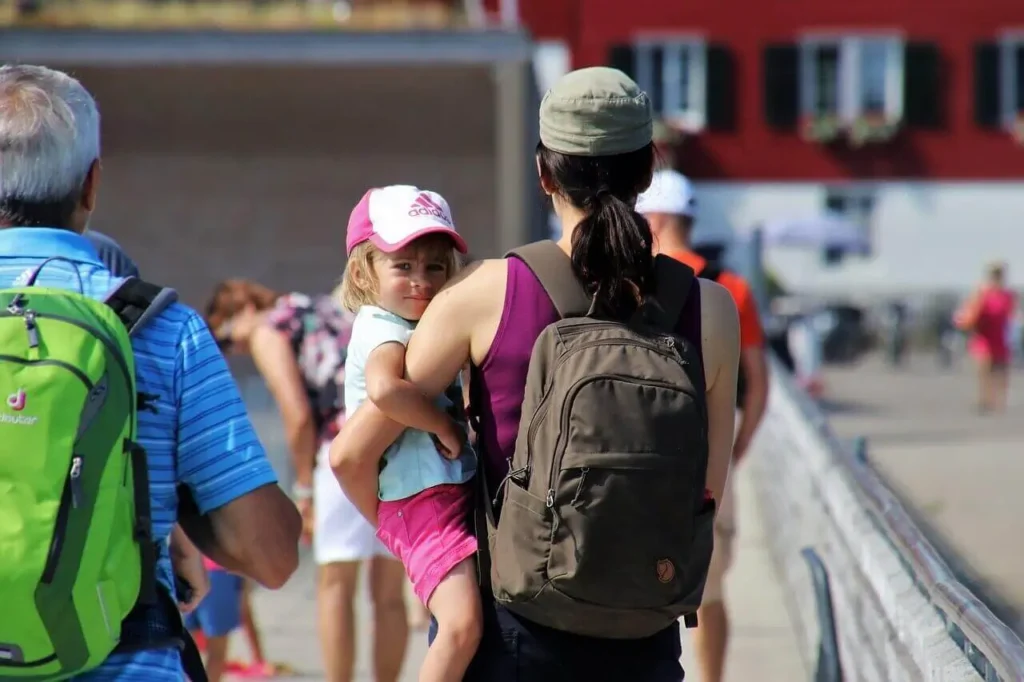
Last Updated On: octubre 22, 2024
CPR and first aid skills are essential for parents, guardians, babysitters and childcare providers. The most important life-saving skills for babysitting jobs are CPR and First Aid. The CPR and First Aid training for childcare professionals prepare them to handle emergencies involving children. It is essential training for childcare workers that covers a wide range of medical emergencies, how to prevent them, and how to treat them. Excessive bleeding, fractures, sprains, burns, fainting, nose bleeding, animal bites, cuts, bruises, head injuries, etc., are all examples of medical emergencies.
As per CPR training, a child is someone older than a year but has not reached puberty, and an adult is anyone who has reached puberty or is a grown-up. The process of CPR is similar for adults and children, but there are some key differences.
Adult CPR consists of 30 rhythmic chest compressions followed by two rescue breaths. CPR is performed by compressing the center of the chest. It is done with both hands at a rate of 100-120 compressions per minute to stimulate the heart physically. Give rescue breaths with just enough air that makes the chest rise.
Child CPR is different from Infant CPR. For children aged one year to puberty, compress the chest with one or both hands, compressing to a depth of about two inches. Because children’s lungs are tiny, rescue breaths should contain less air. For children aged 1 to 8 years, push down 1 1/2 to 2 inches, or one-third of the chest diameter. Adults will have the same experience as older children. Release the pressure and quickly repeat at 100-120 beats per minute, followed by two rescue breaths.
Accidents, which are frequently avoidable, can leave a child permanently disabled. They can also result in significant financial burdens. Most parents focus on safety, and they never entrust their children to anyone. Here are some reasons why CPR and First Aid certifications are required for childcare professionals:
Children are always curious. It makes them more likely to be involved in accidents. Choking, drowning, suffocation, falls, cuts and burns are all common injuries. When such incidents occur, the caregiver must act as quickly as possible to save the child’s life. CPR and First Aid training for babysitters will teach you how to treat these emergencies. You will be able to provide the care needed to prevent further injuries. Regarding first aid procedures, children are more sensitive than adults. As a result, the responder must be aware of the proper techniques, as doing the wrong thing could further harm the child.
Most parents are concerned about their children’s safety in the hands of a babysitter. If parents could find a reliable babysitter to care for their children while they are away, they would not have to give up their jobs. Hiring a first-aid-trained babysitter provides parents with peace of mind when they leave their children at home, as they can rely on the babysitter to keep their children safe. They are confident that the babysitter will act appropriately in a medical emergency.
Parents are more likely to hire CPR and first-aid trained babysitters because of their ability to save lives and prevent health emergencies. They can also advise their childcare service provider to take online first aid certification classes while on the job. The CPR and First Aid Training for children courses only require a few hours of training and an examination, after which the babysitter can immediately print the certificate.
It is critical to learn adult and child CPR to provide life-saving assistance in an emergency. Sign up for the American CPR Care Association’s online CPR and First Aid certification course today to learn more about CPR and how to administer it properly. If you have any questions, our team will be happy to assist you.

